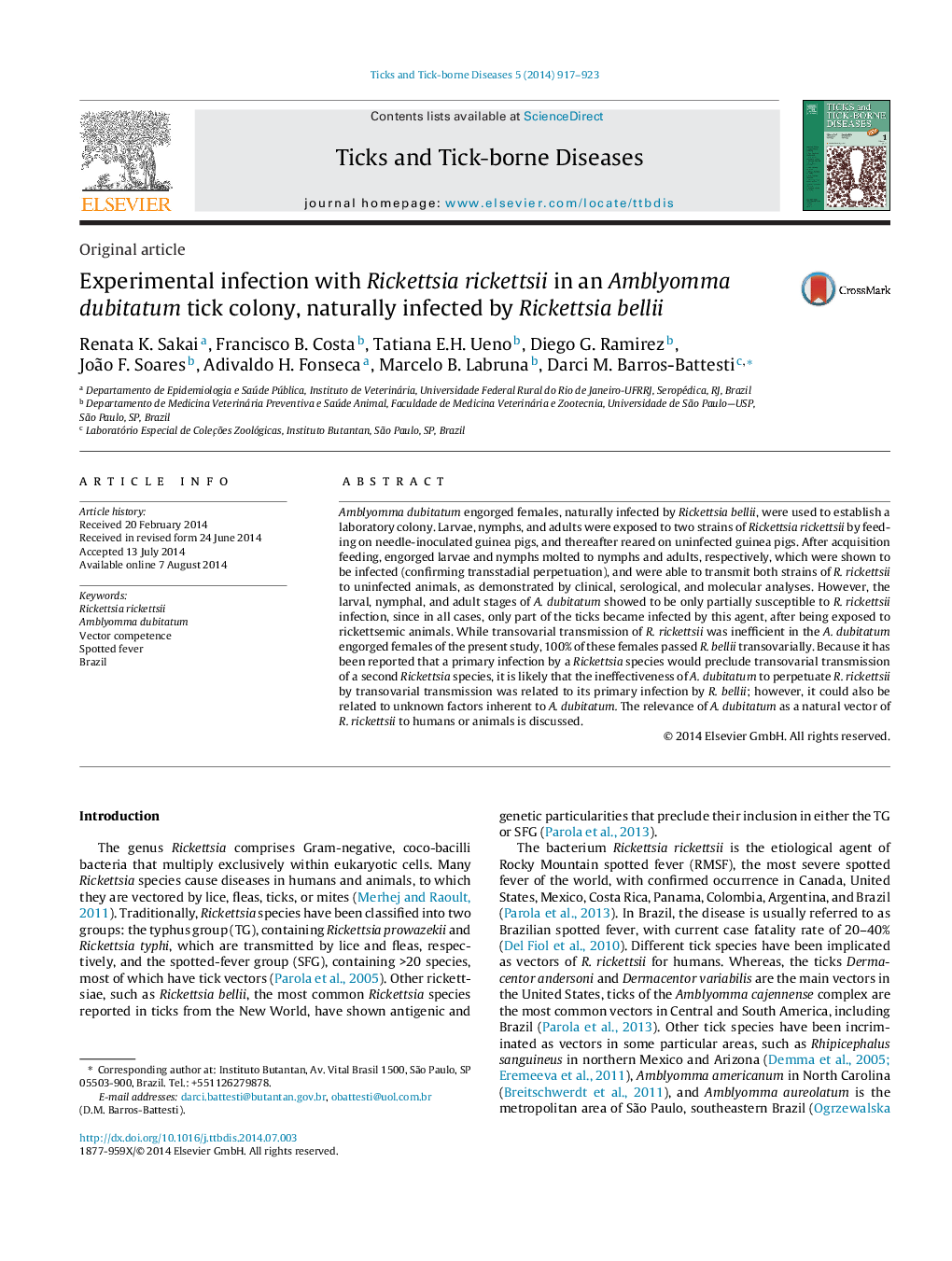| Article ID | Journal | Published Year | Pages | File Type |
|---|---|---|---|---|
| 2474006 | Ticks and Tick-borne Diseases | 2014 | 7 Pages |
Amblyomma dubitatum engorged females, naturally infected by Rickettsia bellii, were used to establish a laboratory colony. Larvae, nymphs, and adults were exposed to two strains of Rickettsia rickettsii by feeding on needle-inoculated guinea pigs, and thereafter reared on uninfected guinea pigs. After acquisition feeding, engorged larvae and nymphs molted to nymphs and adults, respectively, which were shown to be infected (confirming transstadial perpetuation), and were able to transmit both strains of R. rickettsii to uninfected animals, as demonstrated by clinical, serological, and molecular analyses. However, the larval, nymphal, and adult stages of A. dubitatum showed to be only partially susceptible to R. rickettsii infection, since in all cases, only part of the ticks became infected by this agent, after being exposed to rickettsemic animals. While transovarial transmission of R. rickettsii was inefficient in the A. dubitatum engorged females of the present study, 100% of these females passed R. bellii transovarially. Because it has been reported that a primary infection by a Rickettsia species would preclude transovarial transmission of a second Rickettsia species, it is likely that the ineffectiveness of A. dubitatum to perpetuate R. rickettsii by transovarial transmission was related to its primary infection by R. bellii; however, it could also be related to unknown factors inherent to A. dubitatum. The relevance of A. dubitatum as a natural vector of R. rickettsii to humans or animals is discussed.
